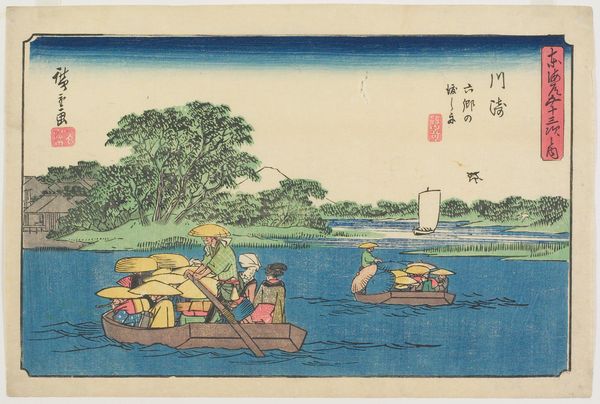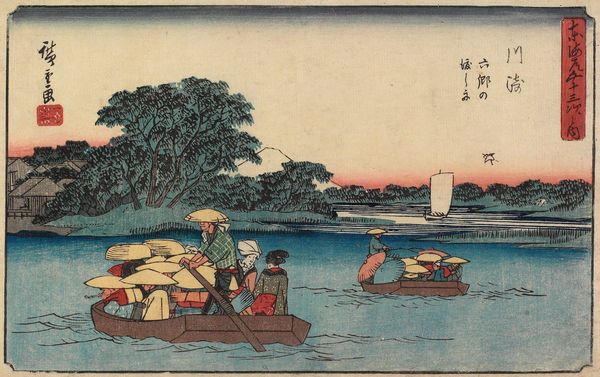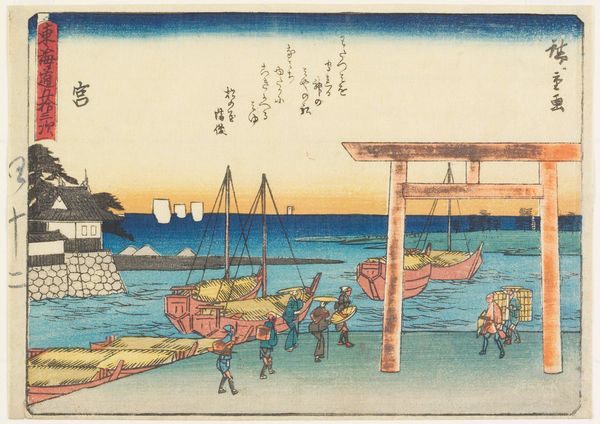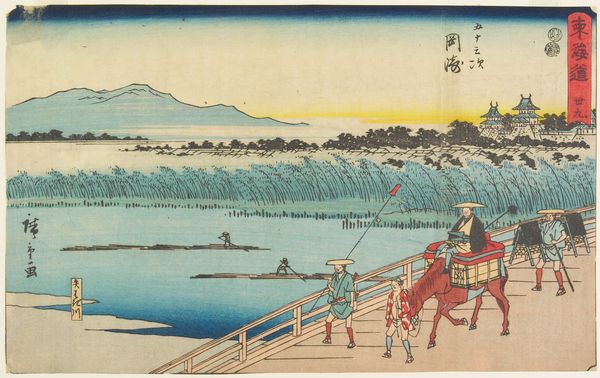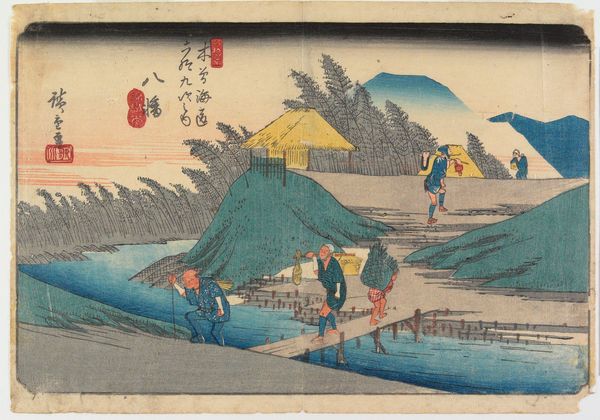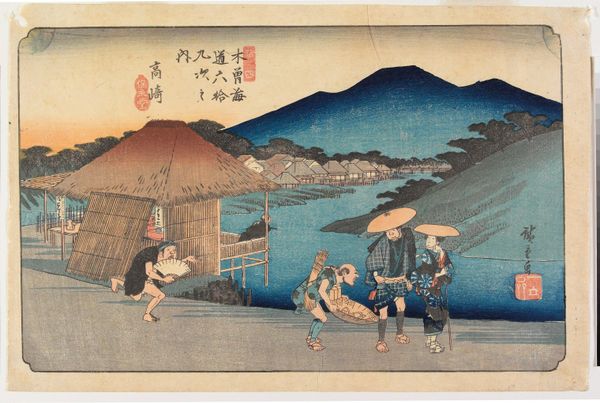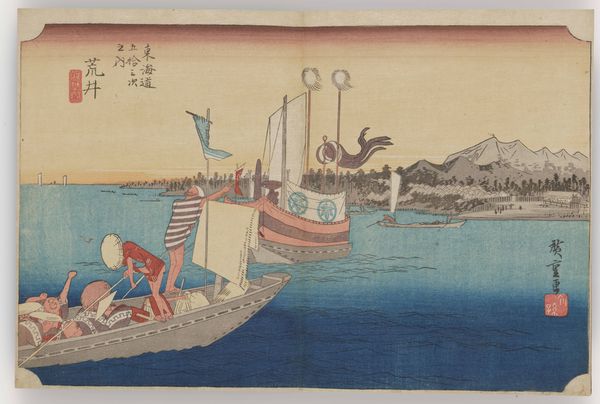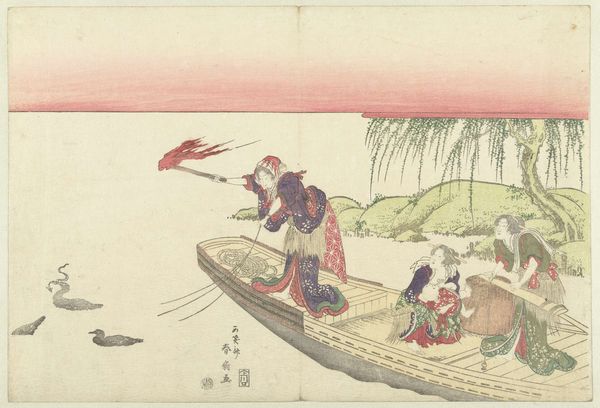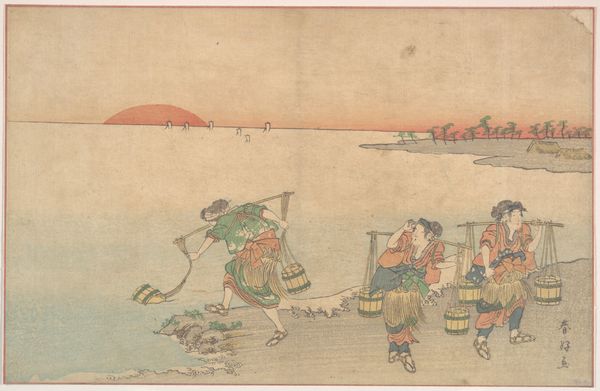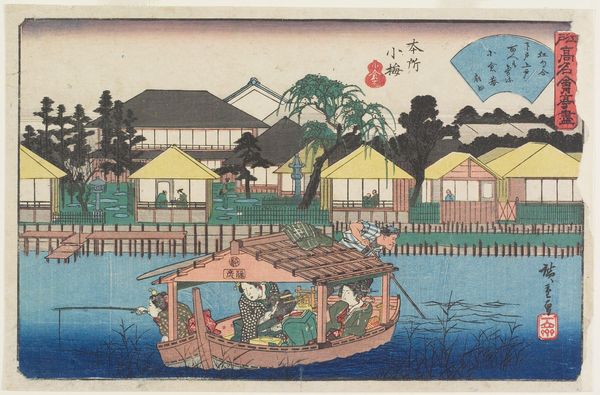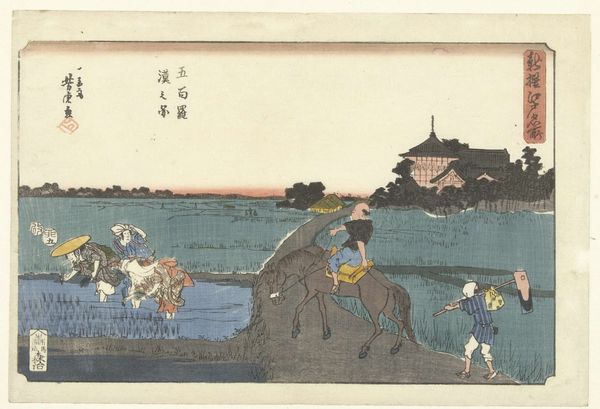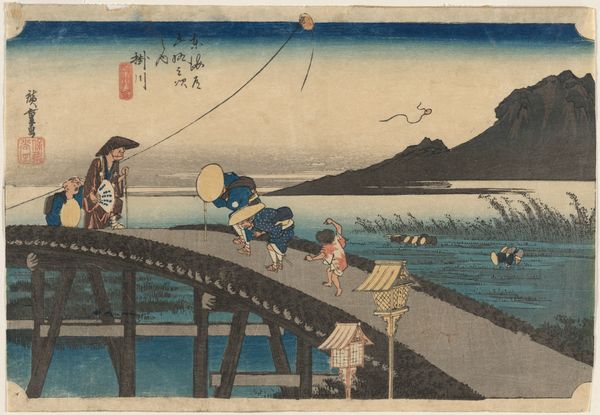
print, ink, woodblock-print
# print
#
asian-art
#
landscape
#
ukiyo-e
#
japan
#
ink
#
coloured pencil
#
woodblock-print
#
genre-painting
Dimensions: 7 11/16 x 11 7/8 in. (19.6 x 30.1 cm) (image)
Copyright: Public Domain
Curator: This is "Ferry on the Tenryū River at Mitsuke" a woodblock print by Utagawa Hiroshige, created around 1841-1842. You can currently find this artwork on display at the Minneapolis Institute of Art. Editor: The immediate impression is just...serene chaos, if that makes sense. The soft palette, that beautiful blue water, the simple shapes—but then there's the bustle of the ferry crossing! People are moving. Life is happening. Curator: Precisely! Hiroshige was masterful in capturing the everyday experiences of Edo-period Japan. This print is part of a series depicting the 53 stations of the Tōkaidō Road, which was the main route connecting Edo, modern-day Tokyo, with Kyoto. This particular station, Mitsuke, was known for this very ferry crossing. Editor: I find the choice of woodblock intriguing; it seems like a democratizing medium. Not painting, not sculpture but…printed image. Almost mass-produced—for its time, at least! Was this accessible to a broader public, a sort of souvenir? Curator: Absolutely. Ukiyo-e prints, like this one, were relatively affordable and widely circulated. They were consumed by merchants and commoners, not just the elite. The subject matter itself contributes to the democratic appeal: it represents landscapes and genre scenes available to everyone and doesn’t exclusively depict higher-class subjects. The woodblock’s repeatable form allowed Hiroshige’s work to influence how Japanese landscapes and life was perceived, reproduced, and commodified. Editor: So it’s beautiful, detailed and accessible! But it also plays with our perception. Like, there's the repetition of the boatman, and each face tucked into each hat… It's almost a sea of sameness, broken up by distinct postures. Does this hint at broader social hierarchies? Curator: I'd argue that while social hierarchies certainly existed, Hiroshige's main focus here is the shared human experience of travel and labor. Look at the detail dedicated to rendering the nuances of river flow against the laboring effort to punt a boat laden with bodies – the making-do that life calls forth. Editor: Well, you have given me much to reflect on! It is a wonderful work of the era in Japanese culture and well worth more study to comprehend the story of travel, working on rivers, and cultural perception in that area and era of Japanese history. Curator: I agree! It shows us a great deal.
Comments
No comments
Be the first to comment and join the conversation on the ultimate creative platform.
